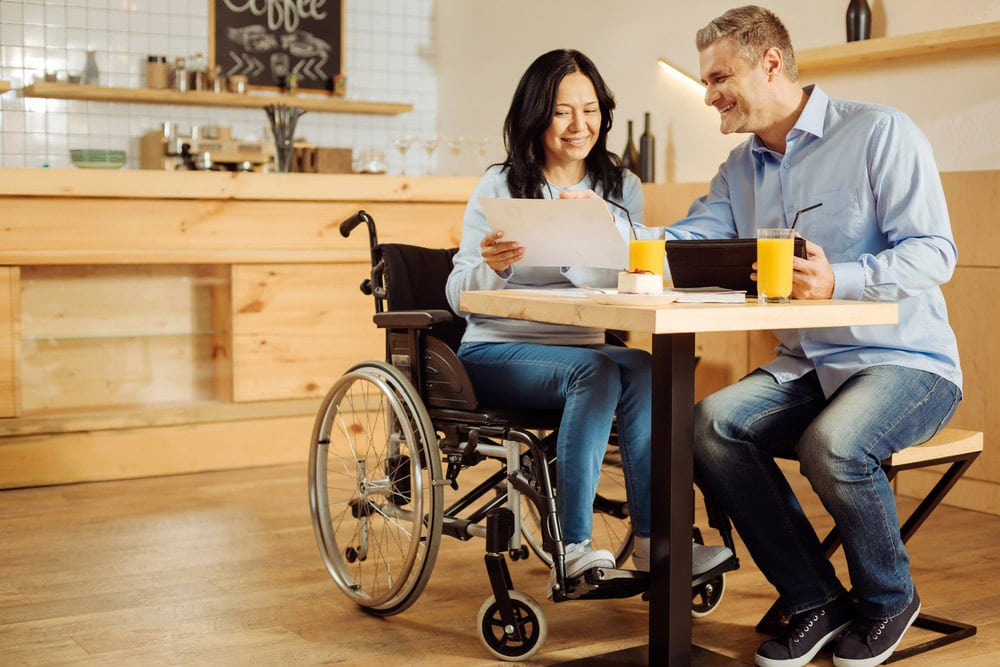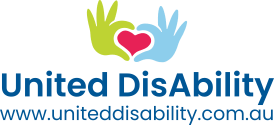
Understanding and enhancing communication within disability care environments is important. It can help create support plans that align with individual needs and respect personal circumstances. In this blog, we’ll explore several communication strategies that aim to improve the interactions between carers and those in their care. We strive to help carers establish more meaningful and empathetic connections, thereby fostering an environment of enhanced mutual understanding and trust. These connections can be important for immediate support and building long-lasting relationships that contribute to the overall well-being of individuals with disabilities.
1. Understanding Non-Verbal Cues
Non-verbal communication can help understand and interact with individuals who may have limited verbal communication skills. Recognising and interpreting body language, facial expressions and even eye movements can be insightful. These cues might give clues about their feelings or needs, providing a basis for responsive care.
Furthermore, developing the ability to interpret these non-verbal signals can help create a more empathetic and connected communication environment. Over time, this understanding might strengthen relationships and enhance the ability to meet the needs of people with disabilities.
2. Utilising Assistive Communication Tools
Assistive communication tools can play an important role in enabling individuals with disabilities to express themselves. These technologies may range from simple picture boards to sophisticated speech-generating devices that can turn text into spoken words. The right tools may offer a voice to those who otherwise struggle to communicate their thoughts and feelings.
However, it often depends on proper customisation and regular updates. Training for both users and carers in how to use these technologies effectively can significantly impact their success, helping these tools meet the individual needs of the users.
3. Creating A Positive Communication Environment
The atmosphere in which communication takes place can influence its effectiveness. Creating a supportive, distraction-free environment can help enhance interactions. This may include maintaining eye contact, using clear and simple language and showing patience and respect during conversations.
Additionally, reducing background noise and minimising disruptions can help maintain focus, particularly for those who may find it challenging to concentrate in noisy or chaotic settings. A calm and supportive environment can help facilitate clearer communication and build confidence in individuals, encouraging them to engage more openly and frequently.
4. Tailoring Communication to Individual Needs
Customising communication methods is important in disability care. This may involve a deep understanding of each person’s unique preferences and capabilities, which can significantly vary even among individuals with similar conditions:
- Identifying Unique Preferences: Begin by engaging in exploratory conversations to discover which methods of communication are most comfortable and effective for the individual.
- Adapting Strategies: Continuously adapt communication methods based on ongoing interactions.
- Feedback Mechanisms: Implement feedback mechanisms that allow individuals to express their satisfaction with current communication methods or suggest improvements.
- Cultural Considerations: Incorporate cultural and linguistic considerations into communication strategies.
- Documentation and Review: Keep a documented record of preferred communication methods and review it regularly with your team.
5. Engaging in Regular Training and Professional Development
Engaging in regular training and professional development might be beneficial for carers. These educational opportunities may introduce them to the latest tools and strategies in communication, possibly enhancing how they connect with and support individuals with disabilities. However, the actual impact of such training can vary and continuous improvement and updates to the training content may be necessary.
Additionally, professional development programs might include workshops on empathetic communication or how to use assistive communication technologies. These sessions potentially help carers provide more personalised support. However, their success may depend on the quality of the training and the participant’s commitment to applying what they learn in practical settings.
6. Establishing Clear Communication Routines
Establishing clear communication routines might help in creating a structured environment that can foster better understanding and interaction. Setting specific times for daily communication activities and consistently using preferred communication tools or methods may gradually enhance the comfort and effectiveness of interactions. These routines might serve to reduce confusion and build a predictable environment.
Additionally, these routines may involve regular check-ins using chosen communication methods, allowing for adjustments based on what is most effective at any given time. Flexibility in adjusting these routines might be needed to accommodate changes in the individual’s requirements or situations. This approach may help maintain communication flow, though it requires ongoing commitment and adaptability.
Looking for Disability Support Services?
From understanding non-verbal cues to utilising assistive communication tools, each aspect can contribute to interactions in a disability care setting. By addressing these challenges, carers may improve their ability to provide responsive and empathetic care, creating a more supportive environment for individuals with disabilities.
At United Disability, we understand this and strive to support every interaction with an individualised communication approach. Contact us for your disability support needs. Our team is here to assist you in creating a care plan tailored for you.












